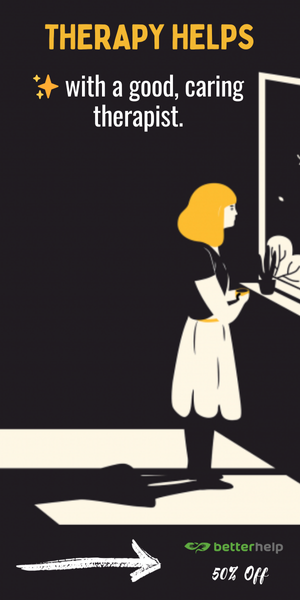I didn’t truly grasp the meaning of emotional availability until I undertook a deep exploration of myself.
It was through this introspective journey, delving into my own emotions and feelings, that I started to unravel the essence of being emotionally present and open.
Throughout my life, I encountered individuals who seemed to draw me in like magnets, only to discover their emotional unavailability. It was a revelation that struck me much later that I, too, carried the weight of emotional unavailability within myself. I was unprepared to forge deep connections that required embracing the full spectrum of emotions.
In truth, I had developed a profound apprehension and fear of emotions. Whenever I experienced genuine happiness and found myself connected to someone, an overpowering fear of loss would grip me, holding me back from delving deeper into the intricacies of the relationship. I became wary of the potential heartbreak that lay ahead. Paradoxically, it became more familiar and comfortable for me to conceal my own emotions and shy away from receiving the emotions of others. It became my peculiar way of connecting with those around me. Eventually, I started feeling a sense of emptiness and lifelessness.
The idea of emotional availability deeply intrigued me. It was a quality I had never encountered or fully understood before. Curiosity sparked within me, and I immersed myself in literature and resources, seeking to comprehend and embrace the essence of being emotionally available.
Emotional availability involves the art of connecting and expressing emotions openly and genuinely. It requires being in tune with one’s own feelings, effectively communicating them, and embracing the emotions of others with care and understanding.
Through reflection, I came to realize that emotional availability didn’t come naturally to me, likely due to past trauma and established patterns. However, I also recognized that I had the ability to consciously make efforts and work toward developing emotional availability in my interactions with others.
Here are the key steps I took to embrace emotional availability:
1. Becoming self-aware of my emotions. Over the past two years, I have undergone a significant shift in how I handle my emotions. Previously, I was accustomed to suppressing them. However, I consciously decided to change this pattern. I began by acknowledging and embracing every emotion, expressing them constructively. This shift marked a turning point, allowing me to develop a healthier relationship with my emotions. I realized that emotions are natural and valuable guides in life. By approaching them with curiosity and compassion, I gained a deeper understanding of myself and experienced personal growth. Seeking validation and support from understanding individuals further enhanced my journey of acceptance and self-discovery.
2. Consciously labelling my emotions. I have embraced the practice of allowing all my emotions to flow freely, making a conscious effort to label them and understand how I truly feel. Whether it’s happiness, sadness, excitement, fear, jealousy, or anger, I have identified and acknowledged each and every emotion within me. Importantly, I have consciously avoided feeling ashamed of my negative emotions.
3. Exploring the origins of these emotions. Not all of my emotions are directly related to the current situation or people involved. By observing closely, I have come to realize this, particularly considering the impact of past traumas. Many of my responses and behaviors may be rooted in those past experiences. Consequently, I have developed a habit of consciously identifying whether my emotions are relevant to the present moment. Whenever I notice heightened emotions, I pause to check if there is a specific trigger or if the emotion is valid given the circumstances.
4. Wholeheartedly acknowledging my escapist tendency. I have noticed a pattern within myself where I tend to avoid facing difficult emotions. It’s not just the challenging ones that make me want to run away, but even when things are going perfectly well I have a tendency to escape. Ignoring, suppressing, and running away from emotions have become common for someone like me who is not accustomed to fully experiencing them. However, I have consciously acknowledged these inclinations and made a decision to allow them to exist without judgment or immediate action.
5. Evaluating instinctual actions and considering alternatives. In recent times, as I allow my natural emotions to flow and acknowledge the actions I feel compelled to take, I have started to explore alternatives. When faced with a desire to escape a situation or avoid my emotions, I question the authenticity of that impulse. I also evaluate whether the situation truly calls for such a drastic action. In doing so, I actively seek alternatives that lie within my comfort zone, aiming to find more balanced and constructive approaches.
Through consistent practice, I attained the ability to embody authenticity and vulnerability.
Emotional unavailability can have significant and wide-ranging impacts on individuals, affecting their relationships, mental health, and physical well-being.
It is important to note that experiencing emotions can be difficult for individuals who are emotionally unavailable. However, it is crucial to address and work through emotional unavailability, as the long-term consequences can be significant.
Seeking therapy or counseling can provide a safe space to explore and understand emotions, develop healthier emotional patterns, and cultivate more fulfilling relationships. Prioritizing self-care, promoting emotional awareness, and engaging in stress-reducing activities can also contribute to overall well-being and mitigate the negative impacts of emotional unavailability on mental and physical health.
~
Please consider Boosting our authors’ articles in their first week to help them win Elephant’s Ecosystem so they can get paid and write more.


 Share on bsky
Share on bsky





Read 4 comments and reply